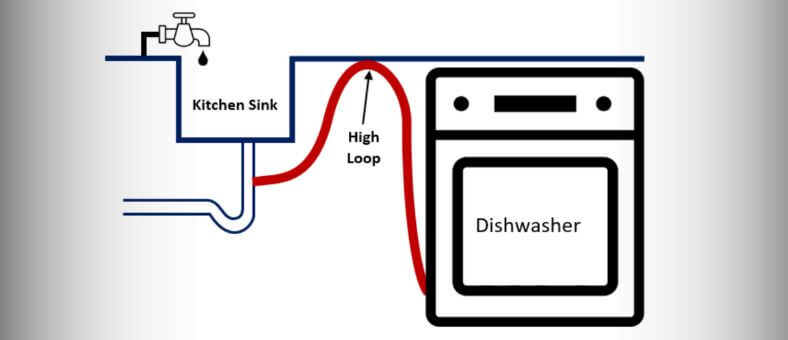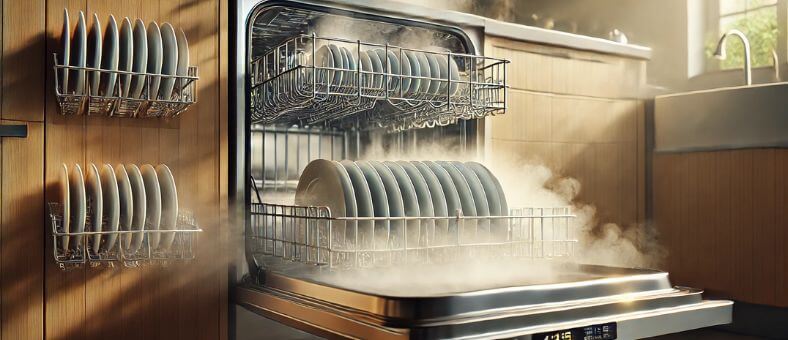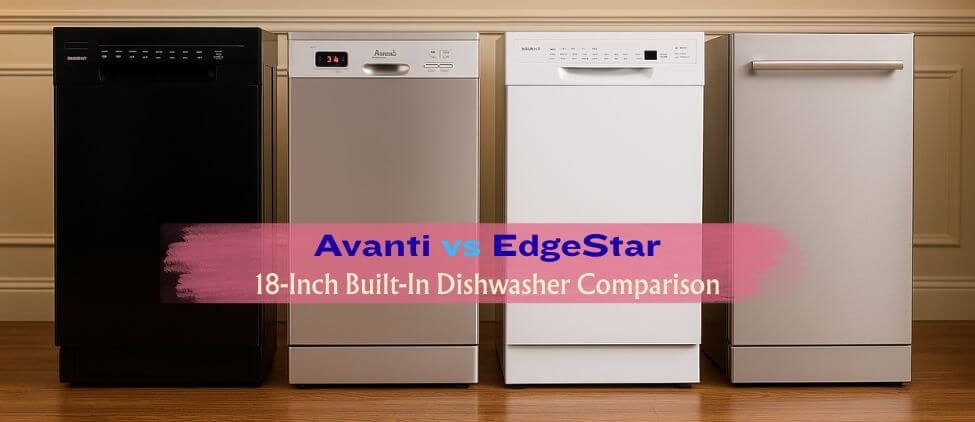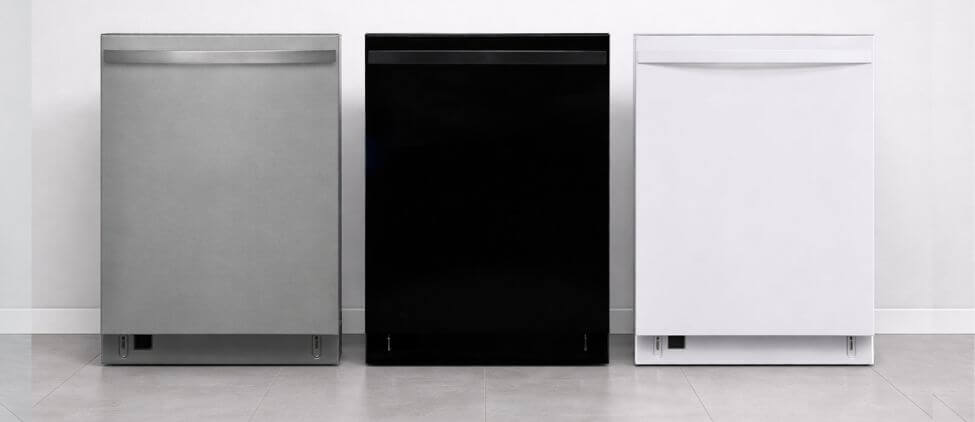You know that feeling when you load up your dishwasher, hit start, and walk away, trusting it to do its thing? Pretty great, right? But have you ever thought about what’s happening behind the scenes to keep your dishwasher running smoothly and your dishes actually clean? The dishwasher high loop is a crucial element that doesn’t get much attention.
Now, I get it; plumbing setups aren’t precisely exciting dinner table talk. But here’s a fun fact: a high loop could be the most crucial detail in your dishwasher’s drainage system. Without it, dirty water from your sink or garbage disposal could backflow into your dishwasher. Yep, all those food bits and gross water could end up where your plates and cups are supposed to sparkle.
So, what is a dishwasher high loop, and why do you need one? Don’t worry; we’re not diving into a plumbing lecture. I’ll break it all down for you in a way that’s easy to follow and, dare I say, even a little enjoyable. Let’s get into it!
Consumer Confidence:
According to a recent survey, 92% of dishwasher owners believe that understanding their appliance’s mechanics, like the high loop, boosts their confidence in its performance. Get in the know, and let the peace of mind flow!
Table of Contents
Understanding the Basics of a Dishwasher High Loop
When it comes to dishwashers, the high loop might seem like a minor detail, but it plays a critical role in keeping your kitchen clean and safe. Only three questions and their subsequent answers will make you understand it;
How is it different from other drainage methods?
While some dishwashers use air gaps (more on that later), a high loop is simpler and less expensive to install, often making it a preferred choice for homeowners.
What is a dishwasher high loop?
A high loop is a section of the dishwasher drain hose that is elevated and secured above the flood level of the sink. It prevents wastewater from flowing back into your dishwasher.
Why does your dishwasher need one?
Think of it as a safeguard. The high loop keeps dirty water, bacteria, and debris from your sink or garbage disposal from contaminating your dishwasher.
Why You Need a Dishwasher High Loop
You might be wondering, “Do I really need this?” The answer is a resounding yes, and here’s why:
- The high loop prevents backflow and contamination, creating a barrier to stop dirty sink water from re-entering your dishwasher and keeping your dishes clean.
- It protects your dishwasher and your health by preventing backflow, which can lead to bacterial growth inside the appliance, something that’s both gross and potentially hazardous.
- In many areas, local building codes require a high loop or an equivalent mechanism to be installed during dishwasher setup.
How a Dishwasher High Loop Works
The concept of a dishwasher high loop might sound technical, but its mechanics are refreshingly simple. Essentially, the high loop creates a physical barrier by elevating the drain hose above the dishwasher’s flood level. This elevation prevents wastewater from reversing its direction and contaminating the dishwasher with dirty water.
Additionally, the high loop takes advantage of gravity to maintain proper drainage. When the hose is looped high enough, gravity disrupts the natural flow of water back toward the dishwasher, ensuring that wastewater continues to flow outward as intended. It’s a straightforward yet effective method to keep your dishwasher functioning safely and efficiently.
High Loop vs. Air Gap: What’s the Difference?
When researching dishwasher drainage, you’ll often come across the term “air gap.” Here’s how it compares to a high loop:
| High Loop | Air Gap |
|---|---|
| Definition: A section of the dishwasher drain hose elevated above the sink’s flood level to prevent backflow. | Definition: A physical device installed above the sink that uses a gap of air to stop backflow. Often required in new builds. |
| Key Differences: Simpler and more affordable option, easy to install. | Key Differences: Offers more robust protection but involves additional installation work and cost. |
| When to Choose: Ideal for older homes or when simplicity and cost are priorities. | When to Choose: Required by some local building codes or if extra peace of mind is desired. |
To learn more, visit the Dishwasher Air Gaps blog to understand them more.
Dishwasher Floods: More Common Than You Think
Shockingly, thousands face kitchen floods every year due to improperly installed dishwashers. An air gap could’ve been their savior in this situation.
Step-by-Step Guide to Installing a High Loop in Your Dishwasher
Installing a dishwasher high loop might sound daunting, but it’s a relatively straightforward process you can tackle with a bit of patience. Here’s how you can do it:
Step 01 – Identify the Drain Hose
Locate the dishwasher’s drain hose. It’s usually a flexible pipe running from the dishwasher to your sink or garbage disposal.
Step 02 – Route the Hose to Create the High Loop
Lift the hose and route it so that it forms a loop that’s higher than the sink’s flood level. This is the critical step in creating the high loop. If your drain hose is too short, consider using an extra-length drain hose, which is available in sizes ranging from 3.2 ft to 19.6 ft.
Step 03 – Secure the High Loop Properly
Use a clamp, bracket, or zip tie to secure the loop to a sturdy surface, such as the underside of your countertop. This ensures it won’t sag or fall out of place.
Step 04 – Connect the Drain Hose to the Garbage Disposal or Sink Drain
Attach the hose’s end to your garbage disposal or sink drain connection, ensuring it’s properly fitted and secured with a clamp.
Step 05 – Check for Proper Functionality
Run your dishwasher on a quick cycle to test the setup. Watch for any leaks or backflow issues to ensure everything is functioning as it should.
Check the video to have an idea about tieing the drain hose using a zip tie and a screw hook.
Safety First with High Loops:
Studies indicate that proper high-loop installation reduces dishwasher backflow incidents by up to 70%. Your dishes’ hygiene starts with installation.
Troubleshooting Common High Loop Issues
Even the best setups can encounter issues. If you’re having trouble with your dishwasher high loop, here are some common problems and how to resolve them:
- Over time, the loop may sag, reducing its effectiveness. Fix this by re-securing the hose with a sturdier bracket or zip tie.
- Check for blockages or bends in the hose that could disrupt water flow. Straighten out the hose and clear any obstructions.
- If the hose is too short, it may not form a proper loop. Consider replacing it with a longer hose to achieve the necessary elevation.
- Backflow or poor drainage can lead to subpar cleaning results. Recheck the high loop to ensure it’s installed correctly and securely.
Cost of Installing a High Loop for Your Dishwasher
One of the best things about a high loop is its affordability. Here’s a breakdown of the costs involved:
| DIY Installation | If you’re handy with tools, you’ll likely spend around $10–$20 for materials like brackets or clamps. Most dishwashers come with a sufficiently long drain hose, so additional purchases might not be necessary. |
| Professional Installation | Hiring a plumber can cost anywhere from $75 to $200, depending on your location and the complexity of your setup. |
| Replacement or Upgrades | If your current hose is too short or damaged, you may need to purchase a new one, which typically costs $10–$30. |
Whether you DIY or hire a professional, a high loop is a cost-effective solution for preventing backflow and maintaining your dishwasher’s efficiency.
Maintaining Your Dishwasher High Loop for Optimal Performance
Once installed, your dishwasher high loop requires minimal maintenance, but a little attention can go a long way:
- Regular inspections are important, so periodically check the high loop to ensure it’s securely fastened and hasn’t sagged or drooped over time. An adequately maintained loop ensures consistent performance.
- Cleaning the hose can help prevent issues if you notice slow drainage. Detach the hose and clear out any debris or buildup inside to maintain smooth water flow.
- Re-tightening connections are necessary as clamps or brackets holding the hose can loosen over time. Check and tighten them regularly to keep the loop stable and secure.
- To ensure your sink functions smoothly, it’s important to prevent clogs. Avoid pouring large food particles or greasy substances down the drain, as they can obstruct the system and hinder the efficiency of the high loop.
Is a Dishwasher High Loop the Best Option for You?
When considering whether a dishwasher high loop is the right choice, weighing its benefits against your specific needs is essential. For many households, a high loop is an affordable, easy-to-install solution that effectively prevents backflow and contamination. It’s especially suitable for older homes or setups where simplicity is key.
However, there are cases where an air gap might be a better choice, particularly if local building codes mandate it or if you want an extra layer of protection. Modern dishwashers sometimes have built-in mechanisms that work well with either option, so checking your appliance’s recommendations is a smart first step.
Ultimately, the decision depends on your plumbing configuration, local regulations, and personal preference. Both options work well to safeguard your dishwasher, but a high loop remains a reliable and widely used method.
Conclusion: Why a Dishwasher High Loop is Essential
A dishwasher high loop might not be the flashiest part of your kitchen setup, but it’s a small detail with a big impact. Preventing backflow and ensuring clean drainage protects your dishes, dishwasher, and health. Whether you’re installing a new dishwasher or troubleshooting your current one, understanding the role of a high loop can save you time and hassle in the long run.
If you’re considering making changes to your setup, remember that installing a high loop is straightforward and cost-effective. With a little effort, you can keep your dishwasher running smoothly and enjoy the peace of mind that comes with knowing your appliance is functioning as it should.
At WashDryDazzle, we’re dedicated to providing essential insights that make your daily chores effortless. Dive deeper into our comprehensive Dishwasher Education and Dishwasher Guides hub to learn more.
Frequently Asked Questions (FAQs)
Why is the configuration of the drain hose necessary in dishwashers?
Proper drain hose configuration ensures efficient drainage, prevents backflow of dirty water into the dishwasher, and complies with many local plumbing codes.
Is there a preferred height for the high loop configuration?
Ideally, the highest point of the high loop should be higher than the base of the kitchen sink to ensure effective backflow prevention.
How does a high loop contribute to dishwasher safety?
A high loop prevents the backflow of potentially contaminated water from the sink into the dishwasher. This ensures the dishes are washed in clean water, safeguarding your health.
What is the primary purpose of a high loop in the dishwasher’s water flow?
The high loop’s main purpose is to prevent the potential backflow of water from the sink or garbage disposal back into the dishwasher, ensuring a clear path for water drainage.
Can I install a high loop with a double sink setup in my kitchen?
A high loop can be installed with a double sink setup. Ensure the drain hose connects to the sink drain or garbage disposal in a way that still maintains the high loop’s elevated curve.
Are there specific plumbing requirements for installing a dishwasher high loop?
The high loop should ideally be positioned just below the countertop to prevent backflow. The hose should maintain an upward bend without any sagging.










